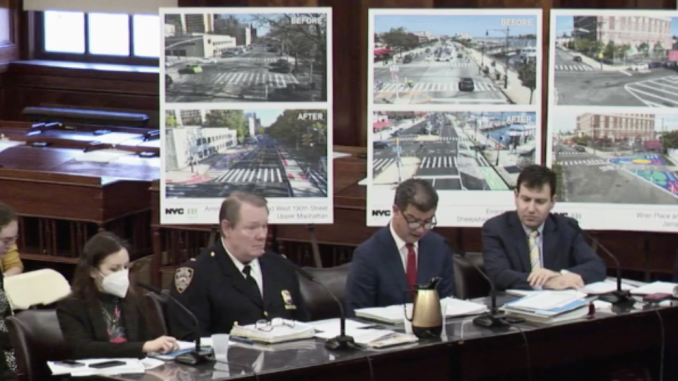
BY DEJA WALLACE
On Feb. 14., borough commissioners, council members, and concerned New Yorkers filled City Council chambers to discuss the increase in pedestrian deaths in New York City.
The Department of Transportation and Infrastructure conducted a meeting to find solutions to the ongoing trend of the increase in pedestrian fatalities.
Many community members raised concerns in particular about roadways not accommodating cyclists. Council member Amanda Farías, council member representing the 18th district, shared alarming statistics that show the increase of Black, Latinx, and immigrant communities having less safety infrastructure and modes of transportation compared to white neighborhoods.
“More Bronx bikers have been killed in 2020, 2021, and 2022 combined than the past 11 years prior to 2020,” said Farìas.
There’s been an exponential increase in bike and micro-mobility since COVID; however, roadway space has not increased. According to the Cycling in City Report, a 4.3% increase or approximately 70,000 more New Yorkers rode a bike at least once in 2020 compared to 2019.
“We suffered as many deaths from gun violence last year as traffic violence these are preventable deaths,” said council member Lincoln Rester.
Although council members say the budget they’re working on will solve this ongoing trend, many council members and residents just aren’t convinced until they see this pattern reversed.
Records show that last year was the first time Vision Zero reports hadn’t been submitted, along with annual cycling in the city, greenway, and quarterly reports that have been either missing or late. The NYC Bike maps show protected bike lanes are more accessible in wealthy white communities, as compared to Black communities.
The main question that was asked throughout the meeting was how can the DOT improve safety and reverse this ongoing trend in specific communities that have a lack of safety and infrastructure.
“I know what it is to fight for equity,” said DOT Commissioner Ydanis Rodriguez. “This is about action. We have to redesign these intersections.”
